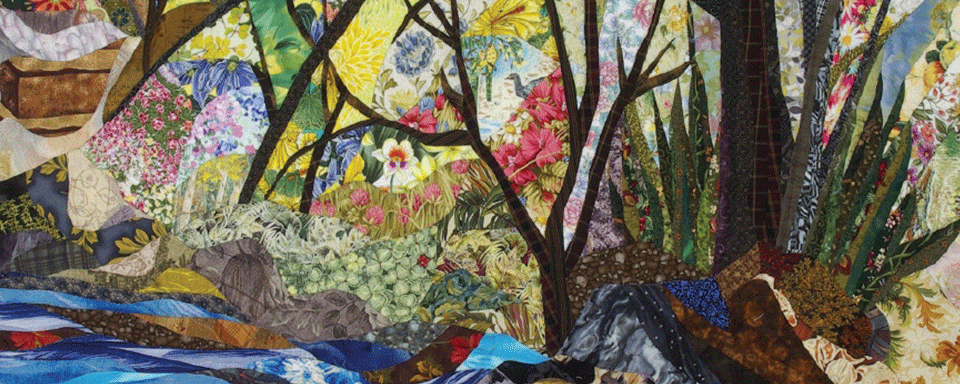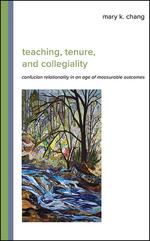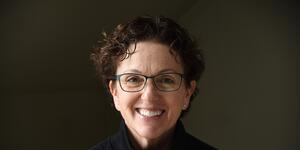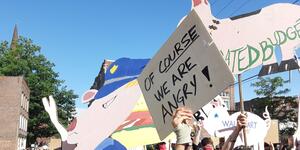
Beyond Measurement
Guest Post by Mary Chang (SUNY Press Author)
What made those good teachers in your life stand out? It may be hard to put into words, but you know quality teaching when you experience it. At the university level, how faculty teach can profoundly influence students’ career and life paths. But good teaching is hard to measure. Higher educational institutions need to pay more than lip-service to the value of teaching. They need to move beyond measurement as a way to determine faculty contributions by viewing teaching and learning as contextual activities. Acknowledging the relational nature of teaching can help institutions understand the limits of quantifying faculty contributions. More importantly, it challenges them to see their responsibility in generating broader university cultures that genuinely value and support the development of quality teaching.
My interest in exploring a process-oriented view of higher education in Teaching, Tenure, and Collegiality emerged in part from a prior experience of teaching in an innovative three-week intensive writing program for incoming first-year students at a liberal arts college. The program embraced its faculty as learners by creating a supportive context for faculty to learn about writing-to-learn practices with a weeklong training for new faculty and two faculty-led weekend workshops for all faculty before teaching in the program prior to the fall semester. What made the approach distinct was that the faculty learned the practices as their students might by engaging writing as a way to construct ideas and gain innovative access to reading theoretical and creative texts rather than viewing writing simply as a product to be evaluated. Instead of conveying the practices in a didactic way, the program encouraged faculty members, drawn from institutions nationally, to experience various approaches and then develop their own ways to engage an anthology of multidisciplinary readings with their students. Rather than solely focus on discussing the desired outcomes for students, the program trusted that attending to developing an enriching learning process for faculty would shape how they worked with their students.
By taking the time and effort to create a faculty learning community, the program cultivated a context for faculty in which the sought-after outcomes emerged naturally and in more ways than administrators could have hoped because faculty were motivated to take risks as part of a supportive collegial peer community. What the program did was focus on cultivating the process of learning for faculty in a way that attended to developing collegiality among faculty, which included engaging the practices together, undertaking assignments as their students might, and sharing writing with faculty peers. As a result, team-teaching collaborations emerged naturally, for instance, through the open sharing of lesson plans and informal conversations about teaching. Attention to faculty as learners encouraged faculty members to explore new teaching approaches in part through engaging their experience of feeling vulnerable and challenged as learners as part of a community. The program emphasized collegiality and in doing so broadened normative notions of learning about teaching.
However, what surprised me was that the writing practices, which helped faculty and students to connect with texts across disciplines, were not used more widely, even on a limited basis, in the regular semester courses offered at the college. A question that emerged from this teaching experience was why it was so difficult for the college to share among all its faculty members a pedagogical approach used in a program required for all their students. Students spent the equivalent amount of time and energy as required of a semester-long course to learn a process approach to writing (and along with it accompanying terminology) that could be useful in fostering active discussions and generating ideas for academic papers in many traditional disciplinary classes. Instead, it was often the first and last directed experience students had with this type of process-oriented writing.
My provisional thinking led me to consider how faculty of many disciplines of higher educational institutions tend to be “university trained,” and as a result, our views of teaching are shaped by our often disciplinary experiences of teaching and learning at universities. Although liberal arts colleges often normatively tout the importance of teaching, their administrative structures such as faculty tenure requirements often reflect those of universities to some extent. In short, scholarly value emerges from research productivity rather than teaching excellence. This led me to consider, more broadly, why it is difficult for universities to actualize the importance and value of some of their relational aspects, like teaching, beyond market-oriented perspectives, calling into inquiry their priorities.
I came to appreciate a process perspective without quite knowing it. As a child who was born and raised in the United States and brought up Chinese American, this largely meant having different cultural practices from my Midwestern school friends—my family left our shoes at the door upon entering our home; ate “fusion” food, for instance, like rice with stir-fried vegetables along with breaded fish sticks and mayonnaise on the side; and spoke Mandarin at home and English everywhere else. My early direct notion of classical Chinese texts came shaped in part by my mother’s memories of memorizing texts like the Confucian Analects in grammar school in Taiwan. Her frustration at not knowing what the texts meant as a child yet having to spend quite a bit of time studying them likely contributed to her gravitating toward an interest in math—the clarity of geometric proofs!—to majoring in math in college and to choosing accounting as a profession. But she tells me her feelings of the texts have changed through time. While she did not like the pressure of reciting the texts in front of her classmates, she has come to appreciate how the texts contributed to how she makes sense of life in profound ways. She noticed the meanings of the texts emerged and changed as she changed, rather than having fixed meanings.
The lessons about how learning can emerge through time came in other ways for me. Once when my grandfather came from Taiwan to visit my family, we took a trip to the Rocky Mountains. Grandfather had limited education because of political upheaval in his childhood, lost his father at a young age, and ended up pressed to serve in the military, as did many young men of his era. Along the way, we took a rest stop alongside a gusty mountain river. My siblings and my nine-year-old self rock-hopped along the bank. Without thinking, I picked up a small smooth stone and tossed it into the river, enjoying the plunking sound it made. My grandfather sat down on a rock near me and asked, “What if everyone who stopped by tossed a stone in the river?” In the moment, I wondered what I had done wrong. How could tossing a stone in the river matter? He did not tell me not to throw a stone in the water in an authoritarian way. Instead, he left me with a question that stayed with me, although I did not come up with more varied responses until later in my life, years after he had passed. The river would fill with stones; people could change the flow of a river and a landscape without knowing how. What people do matters; even the action of a child, who tossed a stone in the water to hear the plunking sound, has a consequence. It mattered to some extent because one is necessarily part of a broader world—physical, material, human. It is important to view people’s actions relationally in context, as a part of time and space.
Linda Tuhiwai-Smith (2012) writes that Eurocentric philosophies and languages tend to regard notions of time and space as separate: “This view generates ways of making sense of the world as a ‘realm of stasis,’ well-defined, fixed and without politics” (p. 55). This notion that they can be considered separately insinuates the idea that space can somehow be measured, reflecting an ideological position encoded in language preoccupied with what Smith calls “exactness” and “parameters.” In fact, this notion of space as fixed undergirds normative notions of science in that it foregrounds an idea that knowledge can be attained through the ability to reason in part by giving space dimensions. The notion that knowledge, expressed through language and the ability to reason, can be gathered and accumulated gives humans a hubristic sense of superiority over nature. It’s a limited concept, Smith suggests, because it removes context. It makes it easy to think we understand more than we do, even to magnify what we think we know. Smith discusses how a notion that space can be somehow measured also foregrounds the view that people are individuals, a perspective that gets expressed in how people are viewed in communities—as a basic social unit and building block of society from which a capitalist mode of production develops.
The importance of the notion of viewing time in relation to space leads me back to reflecting on my teaching experience. Perhaps I cannot wholly fault the college at not building more broadly upon the innovative program that they supported given the inertial heft of disciplinary traditions and structures that treat teaching and learning as separate. The implications of Smith’s ideas about a deep fissure of conceptions of time and space suggest it resonates broadly, encoded not only in language but also in institutional practices and priorities in ways that are difficult to perceive when one is an active part of it by contributing to it through one’s actions. Experiences, while viewed as personally valuable, simply do not have the same value in a language that merits outcomes and evidence. Even in academic research, consider how normatively science and its production of quantitative data carries more political and social value with its promise of “generalizability” and “replicability” even as it may to some extent omit or background contextual aspects in its study designs—how it somehow normatively seems more “true” than qualitative and humanities-oriented research, which involves engaging interpretive approaches and seeking to inquire about contexts.
A developing appreciation for a process-oriented perspective, one that embraces a relation between concepts of time and space, leads me to inquire about the value of attending to experiences and relation, to collegiality, to reflective engagement in the context of faculty activities in higher educational institutions, even if their value may be difficult to measure in outcomes-focused ways. Trying to explore a relational view when a predominant product-oriented one is already entrenched is a tall order. But I am reminded that part of the project here is to make more visible the value of what already exists as part of higher educational phenomena, to inquire about the implications of considering the value of relational experiences. My grandfather, with his question about the consequence of tossing a stone in a river, insinuated considerations of anthropocentric as well as geologic time. To consider a relation between time and space beyond one is to consider that there are resonances to one’s actions impossible to know. Engaging an interpretive perspective to construct a Confucian relationality requires a certain amount of trust that when attention is given to enriching people’s experiences, it opens up unpredictable possibilities, suggesting that even those aspects that defy measurement may be profoundly meaningful.
Mary K. Chang is an independent scholar, with a PhD in Educational Foundations from the University of Hawai'i. She is coeditor (with Teresa Vilardi) of Writing-Based Teaching: Essential Practices and Enduring Questions, also published by SUNY Press.
Cited:
Tuhiwai-Smith, L. (2012) Decolonizing methodologies: Research and indigenous peoples. London: Zed.


